- NEW DVD Series – Stone Setting with Bezels
- Tube Set Charm by Kim St. Jean
- Prong Basket Pendant by Kim St. Jean
- NEW DVD Series – Stone Setting with Cold Connections
- New DVD Series – Stone Setting with Wire
- NEW DVD Series: Introduction to Stone Setting by Kim St. Jean
- Featured Tool: Bracelet Bending Plier
- NEW Dvd by Eva Sherman
- Fun, Fast Fold Forming DVD Series
- Double Band Ear Cuff from Alex Simkin
Utility Hammers
by Judy Ellis, Wirejewelry.com
Wire Jewelry Tool Tip for January 27th, 2017
Get to know your hand tools – Tool Tip Four
Utility Hammers
Today we bring you another great tool tip from Helen Driggs: Using utility hammers.
A little about Helen:
HELEN I. DRIGGS is an experienced metalsmith, lapidary and studio jewelry instructor and has appeared in 6 instructional jewelry technique videos. Her book, The Jewelry Maker’s Field Guide was published in 2013.
Follow her blog: materialsmithing.wordpress.com, Instagram: hdriggs_fabricationista and Twitter feed @fabricationista for news, her teaching schedule and for other jewelry-related information.
Helen Says:
Most metalwork requires a hammer. Sure, there are many things you can do with metal that don’t require a hammer, but the minute you want to form, texture, move, thin, flatten, pierce, or texture metal, you’ll probably need some sort of hammer to do so. In my shop, hammers are organized into three categories: utility, forming and texture. Every beginner needs at least one utility hammer and will typically add two more to their toolbox as they progress. So, let’s take a look at my three “must have” utility hammers.
Three basic utility hammers:
- Ball Peen – the ball peen (sometimes pein) or machinist hammer is used to harden or change the metal surface by impact. It has a ball face and a flat face. This should be your number one hammer purchase.
- Rawhide Mallet – a mallet differs from a hammer in that both heads are identical. Mallets are usually wood, plastic or hide. Make this purchase second.
- Brass or Copper Mallet – these specialty hammers will prevent the steel shafts of chisels and punches from becoming deformed after striking them.
How to Hammer:
OK, I can hear you rolling your eyes now, but you would be amazed at the number of students I have witnessed using a hammer the wrong way.
First, the grip: hold your hammer in your dominant hand at the very bottom of the handle. This area of the handle is called the grip for a reason — holding it there will give you the most bang for your buck because the weight of the hammer’s head can then do the work, not your arm, and your wrist and elbow will suffer less.
Second: perhaps you should stand up. In situations like texturing, driving punches, dapping or folding, a seated position is going to have a negative impact on your hammering because your elbow will be too high in the air to get you anywhere. Plus you’re opening the door to shoulder, arm, elbow and wrist injury, so don’t ever sit when you are using a utility hammer.
Choosing hammers:
Like all tools, there are cheapies and there are more expensive models. For some utility hammers, like the ball peen, it’s OK to go budget because you will beat the living you-know-what out of them. Ball peen hammers are sold by the weight of the head, sometimes in sets. Start with a 2oz and add heavier ones as you need to. One word of caution: if you do go budget, make sure the heads are wedged firmly on the handles every time you use the ball peen, unless you are good friends with a window repairman…
For a hide mallet, shop for a mid-price model, because the rawhide will be less likely to unravel on a decent one, and the nicer finish will be smoother and kinder to your jewelry metal. Some hide mallets are weighted, which is a nice feature if you fold metal or bend sharp corners a lot. A good alternative to hide is a Delrin or Nylon mallet. It will accomplish the same tasks but is generally less expensive than a hide mallet, and animal friendly. Eventually you will want to own both kinds of mallets.
A center punch, dapping set, disc or shape cutter and design stamps call for a softer brass or copper mallet to prevent mushrooming the steel shafts of those tools after repeated striking. There is nothing worse than having a punch jam in the die because the shaft has become deformed after using a steel hammer on it, so save your tools and use the right mallet on them.
My 5 favorite uses for utility hammers:
• Use a ball peen to hammer a “well” into the end grain of a wood block for creating synclastic curves in sheet.
• The hide mallet is invaluable for rounding a ring or bracelet on a mandrel. Hold the mandrel vertically and strike the sides of the ring shaft as you size up.
• After years of use, marked up and worn out flat heads on any steel utility hammer will often produce beautiful textures on metal sheet via direct texturing.
• Loose hammerheads can be repaired using a product called “Chair Lock” available from woodworker’s and home supply vendors. It’s great for expanding the wood to securely fill the eye of a hammer’s head.
• The hammerhead of a sturdy ball peen can be mounted in a vise (not the wood handle!) to create an impromptu ball stake — a great set up when riveting curved shapes.
Classes with Helen:
If you’d like to spend some one-on-one time with Helen and learn more about metalsmithing – you still have time to register to join her at JOGS in Tucson. Her classes will be offered January 30th and 31st. Click below to see what she will be teaching for our sister company JewelryTools.com.
Multi-Metal Cold Connected Bracelet
This is the bracelet that started a cold-connection renaissance, and you can learn to make it directly from the artist who created it! You will learn to texture metal, use a disc cutter, drill and punch holes with precision, and connect mixed metal circles with rubber O-Rings and micro hardware to create an unusual, adaptable bracelet or necklace.
Metal formed Botanical Pendant
Saw thin gauge metal and form it on a synclastic stake to quickly create these pretty botanical forms. You’ll be amazed at how fast these can be made and finished and you’ll have the option of forming a pendant or earrings with the option of creating several flower species. The ability to saw well will help you succeed.
Color on Metal
Learn how to add a splash of vibrant color to your jewelry metal! We’ll use colored pencils and pastels to create rich layered color on copper or brass. We will create an easy pair of earrings in class – or students have the option to create a simple riveted pendant if they are experienced at fabrication techniques like sawing and riveting. In addition to the coloring technique, instructor will demo Riveting, Sawing and delve into Color Use and Design. Don’t worry if you can’t draw – we have premade patterns to color, too!
I hope you’ve enjoyed and learned a little bit more about hand tools.
For more great tips from Helen CLICK HERE!
Happy Wrapping!
![]()
Click to Receive Daily Tips by Email






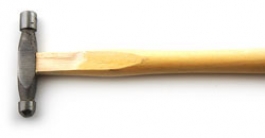
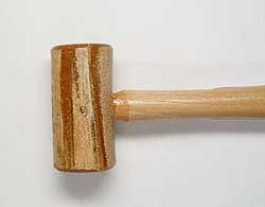
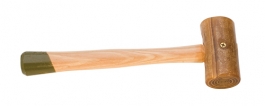
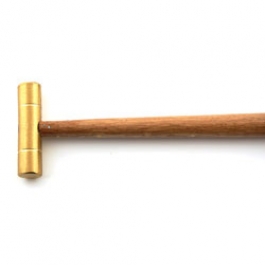
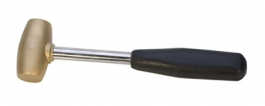


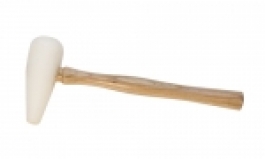

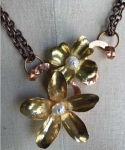
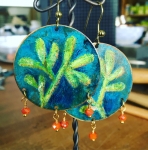
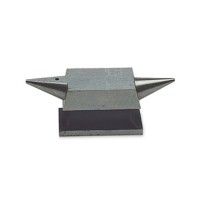
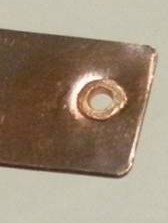
















0 comments